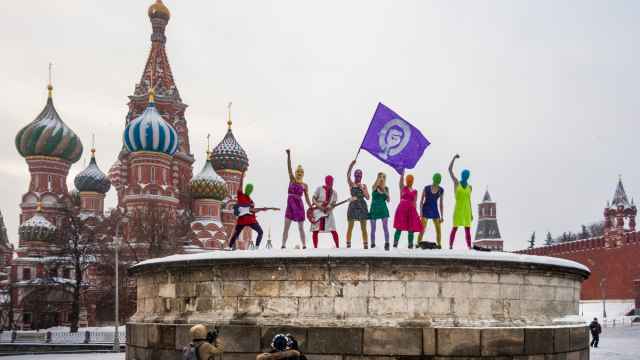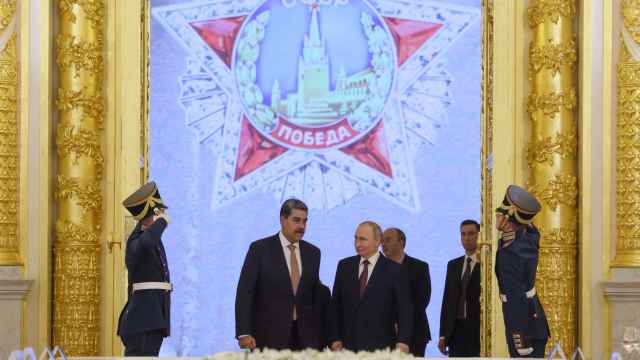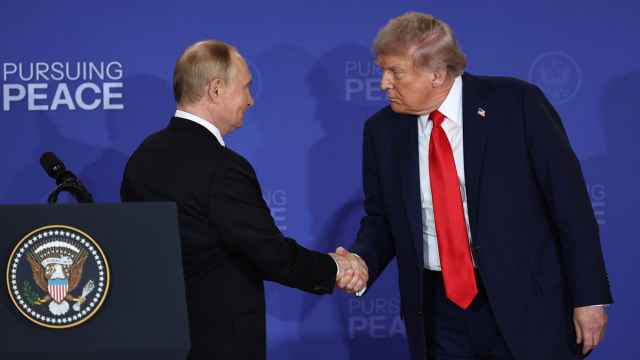Russia’s economic development has faced many challenges over the past two decades, but upgrading the country’s infrastructure remains one of the most daunting. Due to its vast size, Russia has historically found it difficult to establish strong links between its numerous and far-flung regions. As a result, the country has returned to the old habit of funding big-ticket pork barrel projects at the expense of developing and modernizing the country’s infrastructure.
For example, the construction of new asphalt roads has fallen from roughly 11,300 kilometers per year in the 1970s to about 1,600 kilometers per year in the 2000s. The construction of new railways has all but ceased, and the number of functioning airports has dwindled from 1,450 in 1991 to just 329 in 2009. Despite growth in the national economy, the number of passengers riding trains and airplanes has dropped 43.5 percent and 39.5 percent, respectively, since 1990.
In the private sector, however, there is a relative recovery in housing construction, although the 58.1 million square meters of residential space built in 2010 is still 5.8 percent less than what was put up in 1990. There has also been strong development in logistics networks, wholesale and resale trade, the Internet and mobile phone services, with 148 mobile phones sold for every 100 Russians — more than in Germany and France.
Nonetheless, the poor state of the country’s infrastructure is one of the main impediments to economic growth. The sorry state of Russia’s roads makes it nearly impossible for long-haul trucks to travel more than 300 kilometers per day, whereas trucks in the European Union are able to cover 1,000 kilometers per day with little problem.
At the same time, vehicles traveling on Russian roads use 35 percent to 40 percent more gasoline than do cars and trucks in Europe. The result is that transportation costs represent 16 percent to 20 percent of the price of goods in Russia, but less than 7 percent in the EU.
Further, the rapid increase in the number of automobiles combined with the lack of new roads has led to worsening traffic problems in and around major cities. The situation is no better with the railways. A sharp decline in construction and repair work has led to an amortization rate of 65 percent for the fleet of freight cars, while the reliability of the main rail lines has dropped to levels last seen in the Soviet Union of the early 1960s. The quality and price of shipping by rail are such that only 1 percent of the trade between Europe and Southeast Asia is carried along the “great transit route” through Siberia. Amazingly, 70 percent of Russian imports from neighboring China reach the country not by land but through circuitous and expensive transshipments to European ports.
Much of the infrastructure problems are caused by soaring transportation fees and tariffs. The average cost of rail freight rose 3.7 times from 2000 to 2010 and quadrupled over the same period for transporting goods by truck. A round-trip ticket on the Moscow-St. Petersburg Sapsan express train — that travels over old rails and takes 4 hours 35 minutes each way — costs 6,300 rubles ($224), whereas a round-trip Paris-Marseilles train ticket, which travels a greater distance in only three hours, costs 137 euros ($196).
Moreover, Russia has not built any high-speed toll roads in the past 20 years. The EU uses these kinds of highways extensively, generating 16.5 billion euros ($23.6 billion) of income annually. The European Investment Bank alone provides 12 billion euros ($17.1 billion) of credit annually for the construction of toll roads. What’s more, Russia has yet to build a single true high-speed rail line, while Europe already has 8,700 kilometers of them and China is building them at a rate of at least 900 kilometers annually.
In my opinion, these problems are caused by the failure of governance in Russia and the lack of development programs for strategic infrastructure. For example, Russia needs to double the combined length of its highways by 2025. But this goal will be difficult to achieve as long as the road-building industry remains highly monopolized, the price of road construction in Russia remains several times higher than in Europe, and Moscow refuses to grant infrastructure concessions to foreign companies.
Despite the obvious problems with power supply, Russia’s annual input capacity was 3.7 times lower from 2006 to 2010 than it was in the 1980s, with the government doing nothing more than increasing its “control” over pricing. Despite the eternal problem of supplying adequate housing, builders must wait an average of 18 months to get the necessary permits to begin construction.
Another obstacle to progress is the high cost of building roads and other infrastructure elements. Despite the quality remaining low and virtually unchanged over the last 10 years, the price for such projects has risen 2.5 to 4.5 times over that period. Under such conditions, decisive measures are needed to build at least 10,000 kilometers of new roads and 3,000 kilometers of new railways annually, revive air transportation, generate more electricity and build more housing.
At this point, it seems that radical steps are required. Russia needs to use every possible method to attract more foreign investors. It could start by legalizing concession contracts, eliminating outdated monopolies dominating construction and airports, using “life-cycle contracts” that do not delineate between the construction and maintenance of facilities, and streamlining the permit process for construction projects.
Global experience in recent decades shows that construction and transportation are among the most innovation-driven sectors of the economy. Just look at how the skylines of Singapore and Shanghai have changed to get an idea of the possibilities that modern technologies open up for construction. The same rule applies to rail and automobile transportation as well as communication systems.
It is imperative that Russian leaders understand that infrastructure is not just oil and gas pipelines and that the country’s economy will never function properly as long as its vast regions remained unlinked by modern transportation arteries. The government, business community and society must find a way to unite their efforts to achieve this goal. Otherwise, Russia will be unable to achieve stable and effective economic development.
Vladislav Inozemtsev is a professor of economics, director of the Moscow-based Center for Post-Industrial Studies and editor-in-chief of Svobodnaya Mysl. This comment appeared in Vedomosti.
A Message from The Moscow Times:
Dear readers,
We are facing unprecedented challenges. Russia's Prosecutor General's Office has designated The Moscow Times as an "undesirable" organization, criminalizing our work and putting our staff at risk of prosecution. This follows our earlier unjust labeling as a "foreign agent."
These actions are direct attempts to silence independent journalism in Russia. The authorities claim our work "discredits the decisions of the Russian leadership." We see things differently: we strive to provide accurate, unbiased reporting on Russia.
We, the journalists of The Moscow Times, refuse to be silenced. But to continue our work, we need your help.
Your support, no matter how small, makes a world of difference. If you can, please support us monthly starting from just $2. It's quick to set up, and every contribution makes a significant impact.
By supporting The Moscow Times, you're defending open, independent journalism in the face of repression. Thank you for standing with us.
Remind me later.







